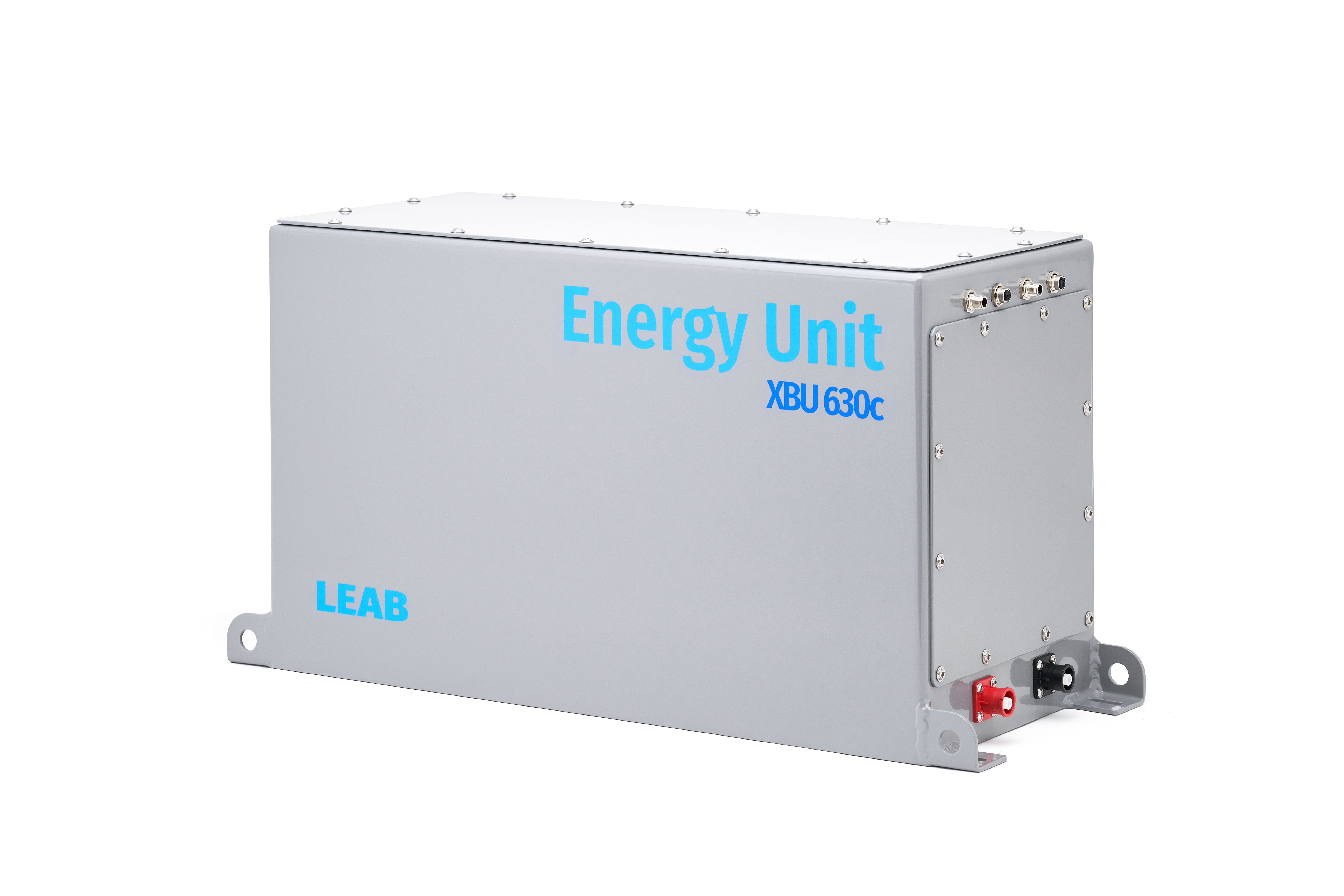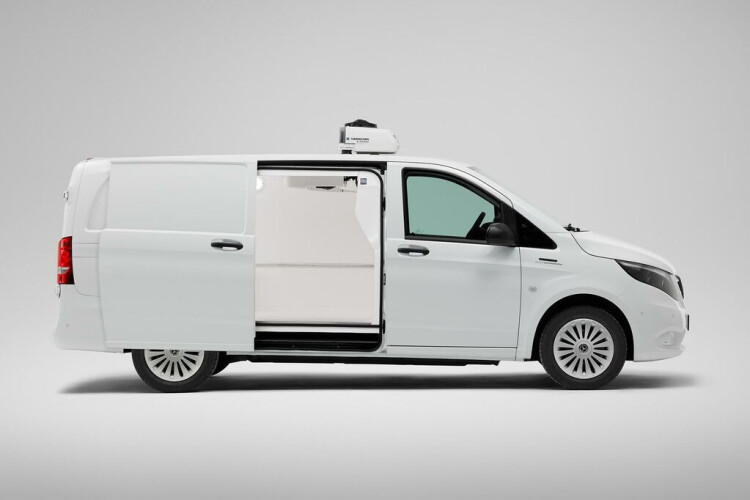

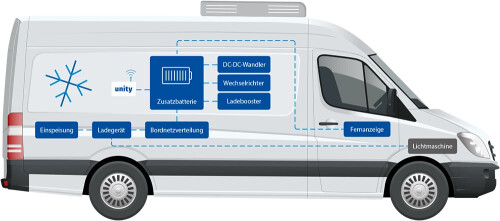
Power supply for vehicles in the transport industry
Electrical motors rather than diesel engines: the electrical energy supply of vehicles has long since ceased to be limited to their drive systems, but also includes the operation of all additional consumers. LEAB's ePTO systems provide reliable and locally emission-free power for this purpose - customised for the most diverse requirements of the transport industry, whether for long-distance transport or last-mile delivery operations. We enable a mobile, uninterruptible power supply for systems with high energy requirements, even in fully electric vehicles such as refrigerated lorries.
What is an ePTO?
A power take-off (PTO) supplies auxiliary consumers, such as a cooling system, with the necessary energy while the combustion engine is running. An electric power take-off (ePTO), on the other hand, makes it possible to supply additional consumers with energy purely electrically, irrespective of the running engine. An ePTO therefore ensures an emission-free and energy-saving supply of power to machines, tools and other electrical auxiliaries in both e-vehicles and vehicles with combustion engines.
The Energy Unit - a powerful ePTO system
The Energy Unit is a compact, modular and powerful ePTO system. It consists of several components, but as a minimum the battery (with integrated battery management system, BMS) and a charger. Depending on the requirements, vehicle and application, there can also be, for example, a charge booster, an inverter and a DC-DC converter. The components can be installed in different parts of the vehicle. This makes the Energy Unit a highly flexible solution that can provide large amounts of energy and is always configured specifically according to your requirements.
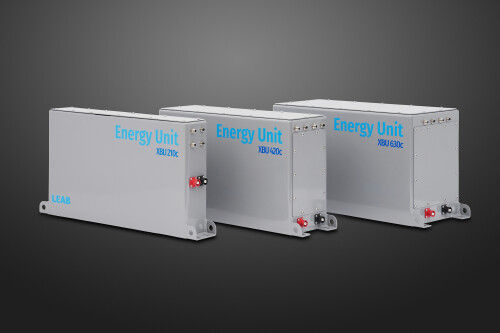
Our specially developed XBU battery.
The Energy Unit enables emergency, special and commercial vehicles to be self-sufficient for an entire day - without having to recharge a single time.
Mobile power supply made to measure
The Energy Unit comes in two versions, each with different capacities:
1. Energy Unit with XBU
Two versions: XBU c for combustion vehicles - XBU e for electric vehicles
Three capacities: 210 Ah · 420 Ah · 630 Ah
2. Energy Unit with cBRIX 50
Single system with 48 Ah
Parallel system with 96 Ah
1. Energy Unit with XBU - data, facts, explanations
The most powerful battery in the range is our own product: the XBU. A pragmatically traditional battery on the outside, but ultra-modern on the inside. Consisting of eBRIX battery modules, a battery management system, a cut-off relay (PMU) as well as an in-house manufactured wiring harness, the XBU is currently available with a nominal voltage of 24 V and a capacity of 210 Ah, 420 Ah and 630 Ah.
ePTO for combustion and electric vehicles
Due to its high capacity, the Energy Unit with XBU is the first choice for many applications when it comes to ensuring reliable mobile power supply. It comes in two versions:
XBU c (combustion engine) = with DC
If the XBU needs to be recharged via a vehicle alternator or booster, the c version is the suitable component. This can be recharged while driving up to approx. 80% SOC via the vehicle alternator or booster.XBU e (electric vehicle) = without DC
If the XBU is not recharged via a vehicle alternator or booster, as is the case with electric vehicles, for example, the e version is used.
For more information on the Energy Unit XBU and temperature-controlled transports, visit:
2. Energy Unit with cBrix - data, facts, explanations
The cBRIX is a small and compact lithium-ion battery with integrated battery management system (BMS), isolating relay and on/off button. It comes as the "cBrix50" model. With a nominal voltage of 24 V and a capacity of 48 Ah, it is suitable for 24 V systems with 1.2 kWh. The integrated and intelligent battery management system controls the charging and discharging of the battery, taking into account the battery temperature, voltage and discharge current.
Do you need something extra? To increase capacity, the cBRIX50 can also be connected in parallel. This gives you a system with 96 Ah.
Single system technical data:
Nominal voltage: 24 V
rated capacity: 48 Ah
Normal operating voltage range: 21.0 V to 28.5 V
operating temperature: -10°C to +55°C
charging temperature (permissible): +5°C to +45°C
cycle stability: > 3,000, after which the battery still has around 70% of its original capacity.
Weight: 6.4 kg
Dimensions (H x W x L): 271 mm × 201 mm × 105 mm
Parallel system technical data:
Nominal voltage: 24 V
rated capacity: 96 Ah
Normal operating voltage range: 21.0 V to 28.5 V
operating temperature: -10°C to +55°C
charging temperature (permissible): +5°C to +45°C
cycle stability: > 3,000, after which the battery still has around 70% of its original capacity.
Weight: 12.8 kg
Dimensions (H x W x L): 271 mm × 201 mm × 210 mm
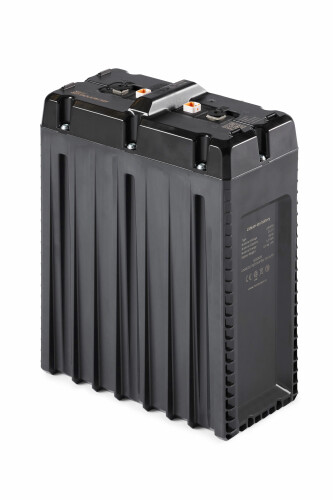
The cBRIX 50 can be used as a single or parallel system.
Energy Unit Customised - ePTO according to your wishes
Available installation space, planned service life, permissible weight, special temperature range: For some projects, the requirements are so specific that a completely customised energy supply is necessary. We can also meet these requirements with the Energy Unit. Because we can also provide customised Energy Units.
We meet together to discuss your requirements and wishes as well as all possible components. We then work out a custom-fit solution.
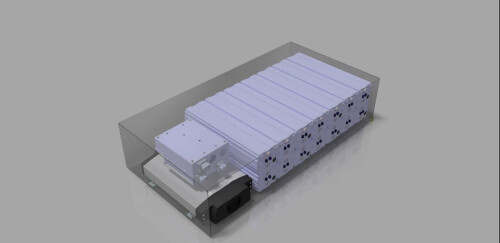
Customised designs are not a problem.
Expandable components for all Energy Unit systems
All ePTO systems can be expanded with the following components:
Power supply
To connect the charger to a 230 V mains, an external feed is recommended. The energy units can be offered with any power supply from the LEAB product range.On-board power distribution (PCM)
An appropriate fuse should always be installed in a 230 V installation in a vehicle. If only 230 V is fed into the vehicle to supply the charger, an input fuse is sufficient.
If an inverter is operated that generates 230 V, an output fuse is required.Inverters
For an output voltage of 230 V, a single suitable inverter can be installed.
For an output voltage of 400 V, three inverters are required.Displays
Currently, the remote display enGage II (1052009001) can be used as a display. This is a round indicator that shows the battery's state of charge in 10% increments. If the state of charge is below 20%, a red LED indicates that the battery needs to be charged.Cables & connections
All Energy Unit systems come with appropriate cables and connections to ensure simple and correct installation.
Charging booster
A charging booster, such as the CLP 600, can be optionally selected for charging while driving.

